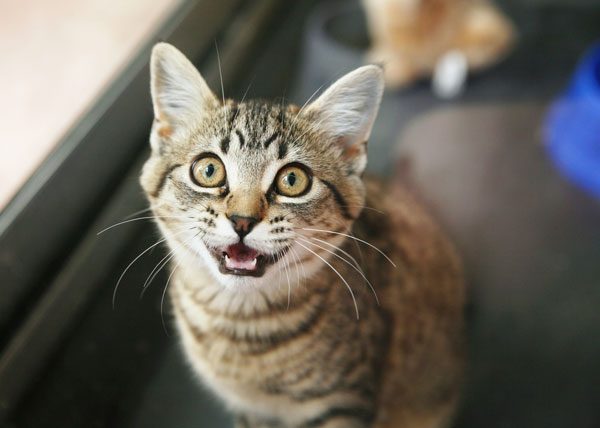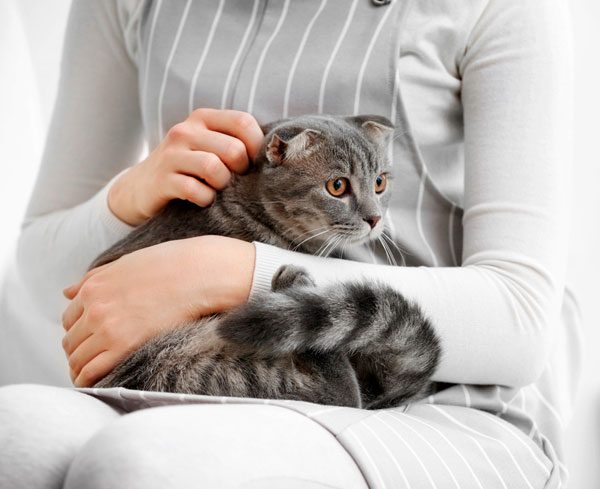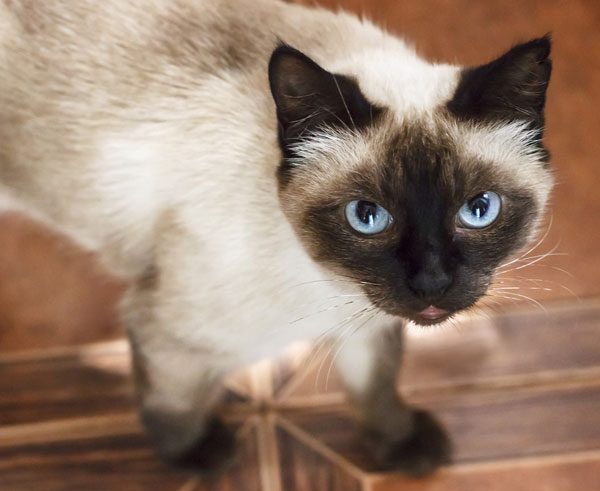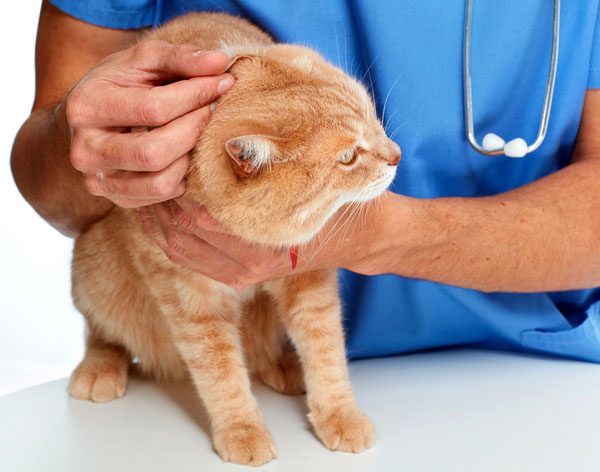Cats rarely meow when communicating with one another. Although felines talk to other felines utilizing body language, scent marking, purrs, chirps, hisses and growls, meows are pretty much reserved for communicating with people.
Meows are far from routine as they cover a wide range of sounds, volumes and types. A meow can be sweet, subtle and as soft as whispers or as loud and persistent as howls. When you listen to a cat meow, you will hear many different variations as dynamic and unique as our own human vocalizations. When we close our eyes, we are able to tell just by the tone of another person’s voice whether they are happy, sad, angry, stressed, sick or scared. Just like humans, cats use their meows (voices) to convey their emotions, states of mind, wants and needs. Cats use the meow to indicate to us that they want something like food, attention, play, to be let in or out, to be picked up or to get a treat. Meows can be endearing or annoying. Regardless the reason, meows are intended to get our attention.
Cat owners develop their own “language” with cats over time that includes meowing as well as body language and positioning. While genetics and history play a role in shaping the cat/owner communication landscape, the way people respond to a cat also influences and reinforces communication and subsequent behavior. In short, cats and kittens quickly learn that meowing around their owners usually gets them the results they want.
Meows can greatly enhance the relationship between cats and their owners enabling them to hold conversations using words and meows. Some kitty owners even sing with their cats. Often time such vocalizations are accompanied by head-butts and purrs as well as reinforced with love, attention, cuddles and stokes.
Meows can also be annoying, incessant, loud, persistent and ill timed, e.g., the middle of the night when sleeping. Typically this means your cat wants something like food or attention. In such situations it is not entirely uncommon for owners to actually make things worse by giving in to their cat’s desires (feeding them, picking them up, petting them, etc.) which reinforces the annoying behavior.
The key to halting such behaviors is not punishment, but rather understanding and addressing the reasons behind the unwanted behavior. Typical reasons felines behave in such undesirable ways include boredom, attention seeking and hunger. Most cats free feed which means that making sure there is always adequate food in their food dish or dishes should solve problems with hunger. If you are unable to free feed your kitty, then you can feed them a couple of times a day making sure to stick to the same routine schedule. For attention based behaviors, make sure you give your cat plenty of attention and playtime. What time you choose to do this can also be critical. For example, if your cat is yowling in the middle of the night, make sure to provide them with plenty of play and attention immediately before bed.
Knowing and understanding your cat’s breed is also beneficial. Breeds like the Siamese, Burmese, Sphinx, Singapura, Tonkinese, American Bobtail, Turkish Van and Bengal are known to be excessively chatty, vocally expressive and loud. There of course are always exceptions as some cats even among these breeds have delicate voices or rarely talk at all.
Vocalizing or lack there of (if your cat is usually vocal) can indicate a medical issue. If your normally quiet cat starts meowing or your normally chatty cat stops talking, you need to take them to the vet as this could mean there is a medical problem that requires immediate attention.
The feline lifecycle from kitten to senior cat can also attribute to changes in the frequency and volume of meows. Kittens may vocalize loudly when they can’t hear because they are unable to gauge the volume of their own voices. Older cats may meow with greater frequency and increased volume and/or at night due to a number of medical conditions including hearing loss, dementia and cognitive issues.
As a professional pet sitter it is my belief that cat vocalizations are a positive sign even when the response is negative. My experience has shown that cats using their voice provide a definitive sign of your present interaction and are an indication of the strength of your bond and the quality of your relationship overall. People are no different. If you are sitting across from someone you have never met that is silent and stoic, how do you know what they are feeling or thinking? If that person yells at you or converses in a friendly manner with a smile, then you know a lot more.
If I am sitting on the floor a few feet across from a cat that is sitting silently and stoically, I really don’t know where we stand. If the cat growls or hisses, then I know that the cat is angry and/or terrified by my presence. If a cat meows in a friendly way, approaches me and rubs up against my hand, arm or leg, then I know our interaction is good and that any potential future bond we our forming is moving in the right direction.
Meows are a special and powerful way for people and cats to communicate. Moreover, meows are a gateway to enhancing, strengthening and deepening the connection and relationship with our feline companions.
This article was adapted from a Catster Magazine story by Marilyn Krieger titled “The Power of Meow: Cats Can Say a Lot Through Vocalization.”





